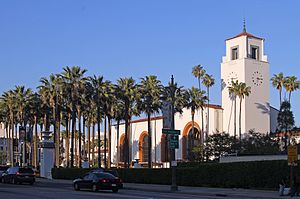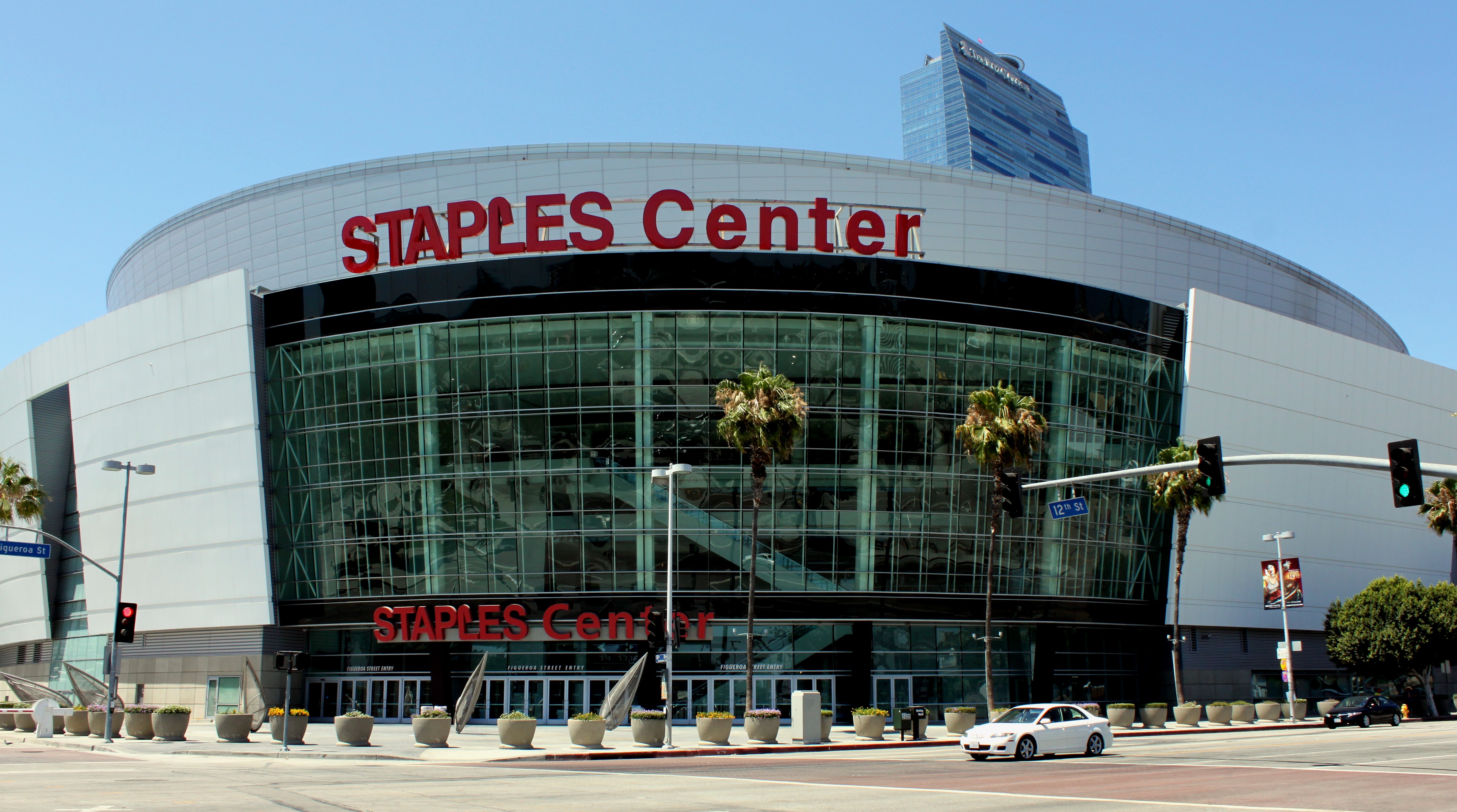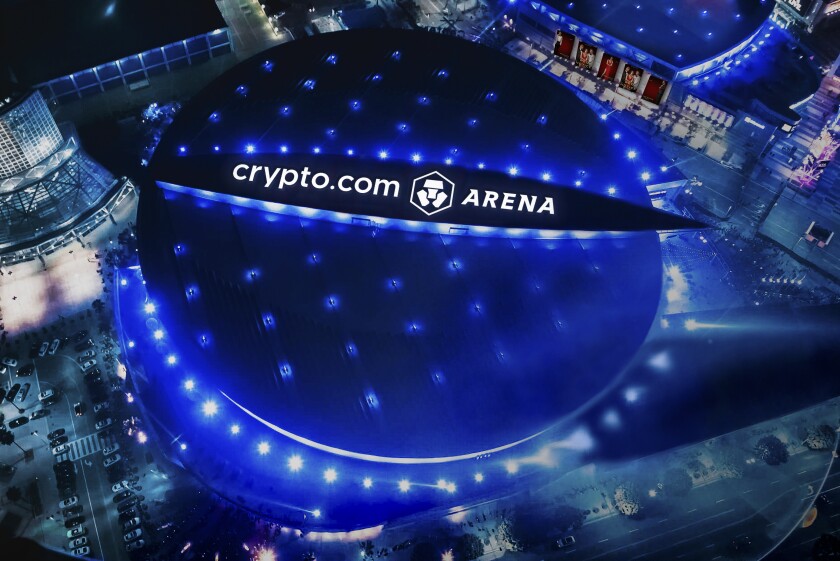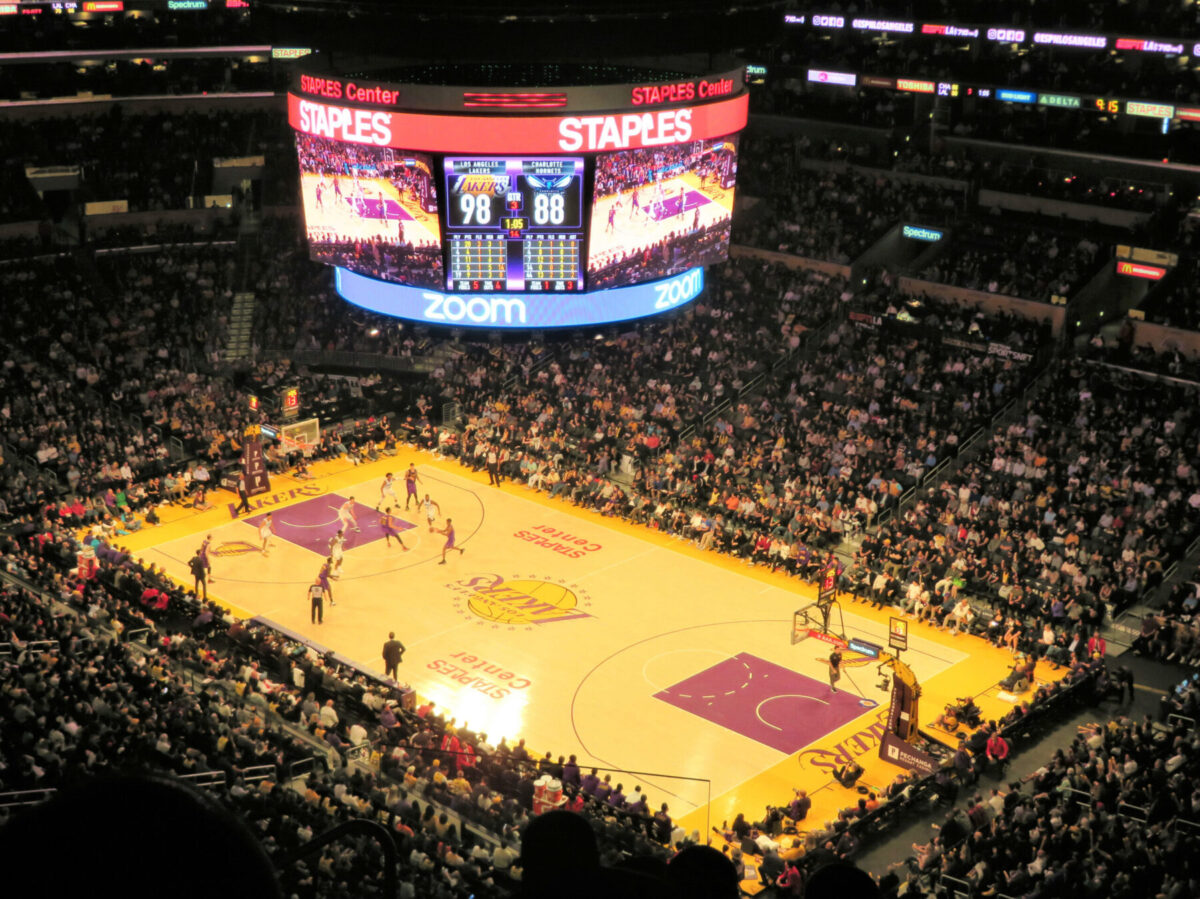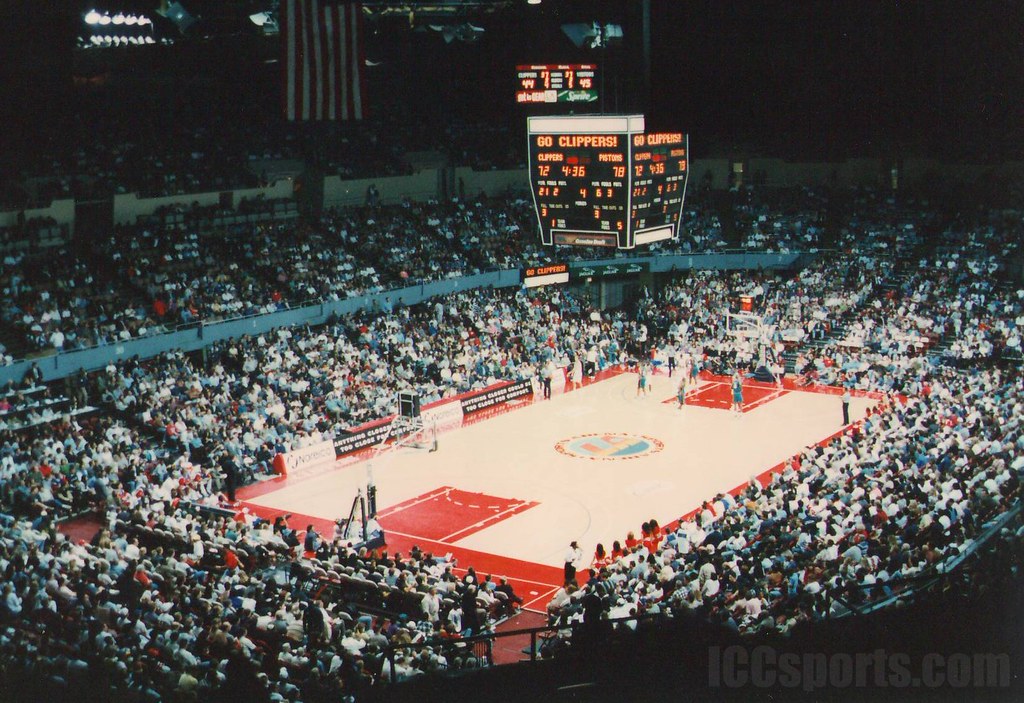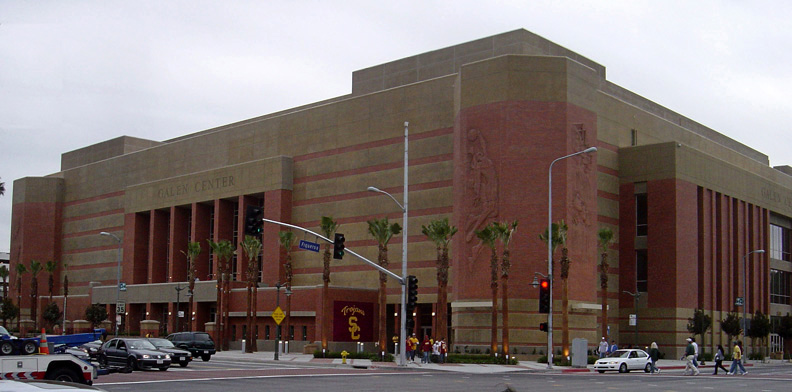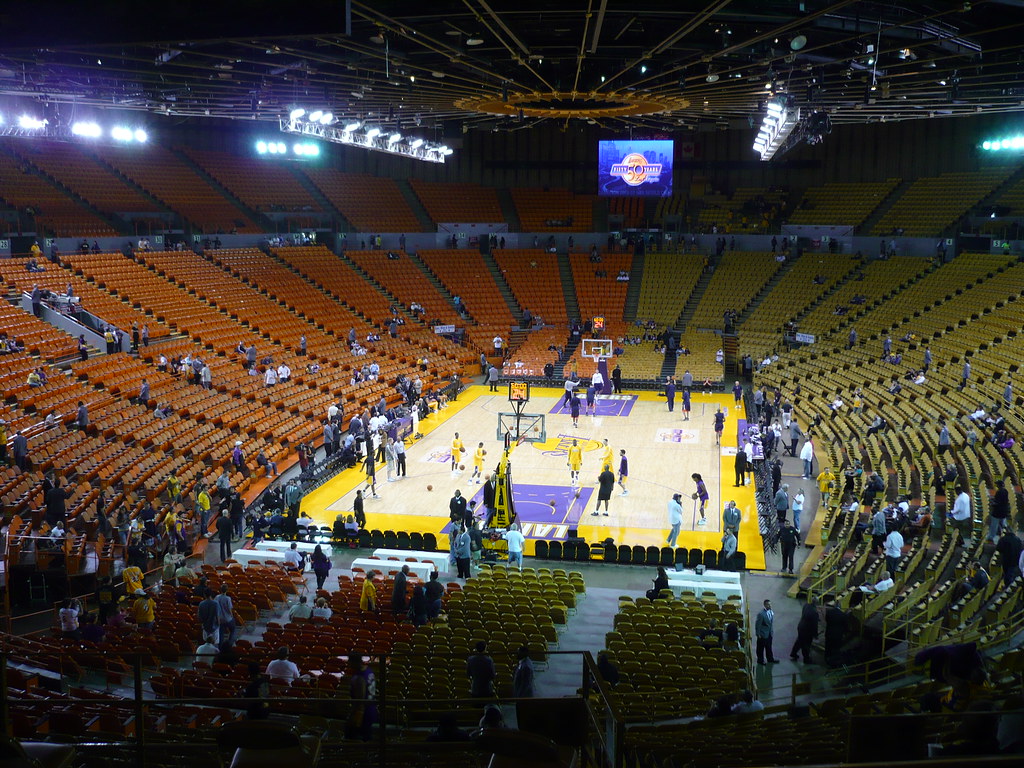Before You Go. The Denver Post is predicting the high 30s for Sunday afternoon, and the low 20s for the evening. Although the mountain air leads to a lot of snow, no precipitation of any kind is forecast for after this coming Wednseday. Still, that's the kind of cold you expect for a hockey game in Canada, not for a basketball game anywhere! You'll be nice and toasty warm inside the arena, but, outside it, you'll need to bundle up.
Denver is in the Mountain Time Zone, so you'll be 2 hours behind New York time. And there's a reason it's called the Mile High City: The elevation means the air will be thinner. Although the Rocky Mountain region is renowned for outdoor recreation, if you're not used to it, try not to exert yourself too much. Cheering at a sporting event shouldn't bother you too much, but even if the weather is good, don't go rock-climbing or any other such activity unless you've done it before and know what you're doing. Besides, this time, it'll be too cold to do anything outside anyway.
Tickets. The Nuggets averaged 18,906 fans per home game in 2019-20, about 97 percent of capacity, before COVID shut everything down. It would not be a good idea to show up 5 minutes before tipoff, and buy then any seat you can afford.
Nuggets tickets are considerably more expensive than in recent years: $308 between the baskets and $121 behind them. In the upper level, they're among the cheapest in the NBA: They're $58 between and just $33 behind.
Getting There. It's 1,779 miles from Times Square in New York to downtown Denver. You're probably thinking that you should be flying.
You can get a round-trip nonstop flight for Sunday morning, and buy it today, for only $278, one of the cheapest flights to any major league city. While Stapleton International Airport (named for 1923-47 Mayor Benjamin F. Stapleton) was a major change-planes-here spot for going to the West Coast and Las Vegas, the new Denver International Airport isn't. However, United Airlines does go directly there from Newark.
Amtrak's Lake Shore Limited leaves Penn Station at 3:40 PM Friday, arrives at Union Station in Chicago at 10:12 AM Saturday (that's Central Time). The California Zephyr leaves Chicago at 2:00 PM Saturday and arrives at Denver's Union Station at 7:15 AM (Mountain Time) Sunday. The return trip would leave Denver at 7:10 PM Sunday, arrive in Chicago at 2:50 PM Monday, leave Chicago at 9:30 PM Monday, and get back to New York at 6:47 PM Tuesday. The round-trip fare is $474.
Union Station is at 1700 Wynkoop Street at 17th Street, just 3 blocks from Coors Field. The front of the building is topped by a clock, framed by an old sign saying UNION STATION on top and TRAVEL by TRAIN on the bottom.
Greyhound allows you to leave Port Authority Bus Terminal at 4:00 PM Wednesday, and arrive at Denver at 10:50 AM on Friday, a trip of just under 45 hours, without having to change buses. That 44:50 does, however, include layovers of 40 minutes in Philadelphia, an hour and a half in Pittsburgh, an hour in Columbus, an hour in Indianapolis, 2 hours in St. Louis, and half an hour in Salina, Kansas; plus half-hour meal stops in Pennsylvania, Illinois and Kansas. Round-trip fare is $477, although it can drop to $340 with advanced purchase. The Denver Bus Center is at 1055 19th Street.
If you actually think it's worth it to drive, get someone to go with you, so you'll have someone to talk to, and one of you can drive while the other sleeps. You'll be taking Interstate 80 most of the way, through New Jersey, Pennsylvania, Ohio, Indiana, Illinois, Iowa and Nebraska, before taking Interstate 76 from Nebraska to Colorado, and then Interstate 25 into Denver. (An alternate route: Take the New Jersey and Pennsylvania Turnpikes to Interstate 70 and then I-70 through Pennsylvania, Ohio, Indiana, Illinois, Missouri, Kansas and Colorado into downtown Denver. It won't save you an appreciable amount of time over the I-80 route, though.)
If you do it right, you should spend about an hour and a half in New Jersey, 5 hours and 15 minutes in Pennsylvania, 4 hours in Ohio, 2 hours and 30 minutes in Indiana, 2 hours and 45 minutes in Illinois, 5 hours and 15 minutes in Iowa, 6 hours in Nebraska, and 3 hours and 15 minutes in Colorado. Including rest stops, and accounting for traffic (you'll be bypassing Cleveland and Chicago, unless that's where you want to make rest stops), we're talking about a 40-hour trip.
Once In the City. Founded in 1858 as a gold rush city, and named for James W. Denver, then Governor of the Kansas Territory, from which Colorado was separated, Denver is a State capital and city of 716,000 people, in a metro area of 3.4 million -- roughly the population of Brooklyn and Staten Island combined. It's easily the biggest city in, and thus the unofficial cultural capital of, the Rocky Mountain region.
The State House
Broadway is the main north-south drag, separating East addresses from West. But the northwestern quadrant of the street grid is at roughly a 45-degree angle from the rest of the city, and this area includes the central business district, Union Station and the ballpark.
The sales tax in the State of Colorado is 2.9 percent, however, the City of Denver adds a 3.62 percent sales tax, for a total of 6.52 percent. ZIP Codes in Colorado start with the digits 80 and 81, with the Denver area running from 800 to 810. The Area Code for Denver is 303, with 720 overlaid. Xcel Energy runs the electricity for the Denver area. The city is about 52 percent white, 32 percent Hispanic, 10 percent black, and 3 percent Asian.
Colorado is basically two States: "The People's Republic of Boulder," and the far more conservative "East Utah." With the State's Western libertarianism now leaning more toward civil rights and pot activism than gun nuttery and "Get off my land" action, Bronco fans were rated 2.9 percent more liberal than conservative.
The Denver Post is a good paper, but don't bother looking for the Rocky Mountain News: It went out of business in 2009. State Route 470 serves as Denver's "beltway." Bus and light rail service in Denver is run by the Regional Transportation District (RTD), and goes for $2.25 for a single ride, and $6.75 for a DayPass. Denver switched from tokens to farecards in 2013.
Going In. The Ball Arena is named for the Ball Corporation, which is headquartered in the Denver suburbs, and makes products for jarring and canning. They have nothing to do with sports. From the arena's opening in 1999 until 2020, it was named the Pepsi Center
The Denver Post is a good paper, but don't bother looking for the Rocky Mountain News: It went out of business in 2009. State Route 470 serves as Denver's "beltway." Bus and light rail service in Denver is run by the Regional Transportation District (RTD), and goes for $2.25 for a single ride, and $6.75 for a DayPass. Denver switched from tokens to farecards in 2013.
Don't worry, the weather isn't forecast to look like this during your visit.
I chose this picture for the look of the train, not for the snow and wet streets.
The arena is across Cherry Creek from downtown, about 2 miles northwest of City Hall. The intersection is 11th Street & Auraria Parkway, but the mailing address is 1000 Chopper Circle, in honor of Robert "Chopper" Travaglini, the beloved former trainer (and amateur sports psychologist) of the Nuggets, who share the arena with the NHL's Colorado Avalanche. It is 1 of 10 current arenas that is home to both an NBA team and an NHL team.
Chopper was actually a Jersey Boy, albeit from Woodbury on the Philly side. He died in 1999, age 77, right before the new arena opened. Chopper Circle is an extension of Wewatta Street.
Ball Arena/Elitch Gardens station serves the city's RTD light rail. If you're coming in that way, you'll probably enter from the west gate, the Grand Atrium. If you're driving, parking starts at just $5.00. The court is laid out east-to-west.
In addition to hosting the Avs and the Nugs, the Pepsi Center has also hosted NCAA Tournament basketball games, the 2008 edition of NCAA's hockey "Frozen Four," and the 2008 Democratic National Convention.
Food. Being a "Wild West" city, you might expect Denver to have Western-themed stands with "real American food" at its arena. Being in a State with a Spanish name, in a land that used to belong to Mexico, you might also expect to have Mexican food. And you would be right on both counts.
Unfortunately, the team and arena websites don't include charts showing where the concession stands are. The arena website does mention specialty restaurants:
The Shock Top Lodge is a restaurant that seats 325 guests, 250 in the restaurant and 75 at the bar, and is open to all ticketholders.
Despite the Nugs' long history, which has surpassed 50 years, they have not had much success. Starting as the Denver Rockets in the American Basketball Association in 1967, then in 1974 adopting the name of an earlier NBA team called the Denver Nuggets, and joining the NBA after reaching the Finals in the last ABA season of 1976, they've won 19 Division titles: 1970, 1975, 1976, 1977, 1978, 1985, 1988, 2006, 2009, 2010, 2019 and 2020.
They have banners for those honors. But they didn't win an ABA title, and have reached the NBA Western Conference Finals only 3 times: 1978, 1985 and 2009. There are no banners for those.
Ball Arena/Elitch Gardens station serves the city's RTD light rail. If you're coming in that way, you'll probably enter from the west gate, the Grand Atrium. If you're driving, parking starts at just $5.00. The court is laid out east-to-west.
In addition to hosting the Avs and the Nugs, the Pepsi Center has also hosted NCAA Tournament basketball games, the 2008 edition of NCAA's hockey "Frozen Four," and the 2008 Democratic National Convention.
Food. Being a "Wild West" city, you might expect Denver to have Western-themed stands with "real American food" at its arena. Being in a State with a Spanish name, in a land that used to belong to Mexico, you might also expect to have Mexican food. And you would be right on both counts.
Unfortunately, the team and arena websites don't include charts showing where the concession stands are. The arena website does mention specialty restaurants:
The Shock Top Lodge is a restaurant that seats 325 guests, 250 in the restaurant and 75 at the bar, and is open to all ticketholders.
The Land Rover Denver Club has seating for 125 and can accommodate over 300 in a lounge-like environment. Guests can enjoy a Colorado craft beer or specialty drink coupled with a chef-inspired dish without missing any of the action in the arena while watching on one of the 20 HD TVs positioned throughout the space.
The Peak Pub House seats 236 patrons, and is available to suite holders, KeyBank Club Level ticket holders, the first row of rinkside, all courtside seat holders, and all patrons with 5 minutes remaining in the game.
Team History Displays. The Nuggets' banners are at the east end of the arena, and the Avalanche's banners at the west end. There are also banners for the Arena Football League's Colorado Mammoths -- which, like the Avs, the Nugs, MLS' Colorado Rapids, the NFL's Los Angeles Rams, and English soccer's Arsenal Football Club, is owned by Walton of Walmart infamy in-law Stan Kroenke.Despite the Nugs' long history, which has surpassed 50 years, they have not had much success. Starting as the Denver Rockets in the American Basketball Association in 1967, then in 1974 adopting the name of an earlier NBA team called the Denver Nuggets, and joining the NBA after reaching the Finals in the last ABA season of 1976, they've won 19 Division titles: 1970, 1975, 1976, 1977, 1978, 1985, 1988, 2006, 2009, 2010, 2019 and 2020.
They have banners for those honors. But they didn't win an ABA title, and have reached the NBA Western Conference Finals only 3 times: 1978, 1985 and 2009. There are no banners for those.
The only images of Nuggets championship banners
that I could find were from their practice facility.
They've retired 7 uniform numbers. From the 1976 ABA Finalists, there's 40, an original Denver Rocket, forward Byron Beck; and 33, guard David Thompson. From the 1978 Conference Finalists, there's Thompson, and 44, center Dan Issel. From the 1985 Conference Finalists, there's Issel; 2, forward Alex English; 12, guard Lafayette "Fat" Lever; and 432, for the number of coaching wins in Denver of head coach Doug Moe. From the 1990s, there's 55, center Dikembe Mutombo.
Before the retirements of Lever's and Mutombo's numbers
The 7 of guard Carmelo Anthony, who led the Nuggets to the 2009 Conference Finals before going to the Knicks, is currently being worn by forward Trey Lyles.
The Nuggets do not have a team Hall of Fame, and they did not announce a 50th Anniversary Team. Thompson, Issel, English and Mutombo have been elected to the Basketball Hall of Fame. So have forward Spencer Haywood, and guards Sarunas Marciulionis and Allen Iverson, but each of those spent just 1 season with the Nuggets; and George McGinnis and Charlie Scott, 2 seasons each.
English, Thompson, Beck, Issel, Moe and Travaglini have been elected to the Colorado Sports Hall of Fame, which is located at the new Broncos' stadium. So have Rockets Glen Gondrezick and Bill Hanzlik, and more recent Nuggets Chauncey Billups and Ralph Simpson.
No Nuggets players were named to the NBA's 50th Anniversary 50 Greatest Players, not even Issel, who, at his retirement, had scored more points than any pro basketball player except Kareem Abdul-Jabbar and Wilt Chamberlain. But the still-active Carmelo Anthony, who played for the Nuggets from 2003 to 2011, was named to the NBA's 75th Anniversary 75 Greatest Players. Haywood, Thompson, Issel, and guards Warren Jabali (formerly Warren Armstrong) and Mack Calvin were named to the ABA All-Time Team.
The Nuggets' regional rivals are the Utah Jazz, although the Colorado-Utah rivalry is far less intense in basketball than it is in soccer, because the Colorado Rapids and Real Salt Lake. The Jazz lead the rivalry, 135-99, but the Nuggets have won 3 of the 5 Playoff meetings between them.
Stuff. Altitude Athletics is located in the Grand Atrium at the arena's west end. It sells Avs, Nugs, Rapids and Mammoths merchandise -- but not the Rams or The Arsenal, as these teams are located nowhere near Denver. They may sell cowboy hats with team logos on them, to tie in with the State's Western heritage.
Being a not-very-successful team, and a not-very-glamorous team, there are no official NBA videos about the Nuggets, and books about them are few and far between. The 50th Anniversary appears to have done nothing to aid this. In 2014, Zach Wyner contributed their entry in the NBA's On the Hardwood series. In 2015, Nate LeBoutillier did the same for their A History of Hoops series.
During the Game. A November 13, 2014 article on DailyRotoHelp ranked the NBA teams' fan bases, and listed the Nuggets' fans 17th, in the bottom half of the league. The article praises them for not having fair-weather fans, saying that they show up even when the team is mediocre. Although they haven't shown up in big numbers since.
Coloradans love their sports, but they're not known as antagonistic. Although the Jets came within a half of derailing a Bronco Super Bowl visit in 1999 (1998 season), and the Devils came within a game of short-circuiting their Stanley Cup run in 2001, the people of the Centennial State don't have an ingrained hatred of New Yorkers, despite the 2006 brawl between the Knicks and the Nuggets at Madison Square Garden. As long as you don't wear Kansas City Chiefs or Oakland Raiders gear, you'll probably be completely safe. (But, as always, watch out for obnoxious drunks, who know no State Lines.)
Neither the Nets' visit nor the Knicks' will feature a promotion. Unlike the Avalanche with Jake Schroeder, the Nuggets do not have a regular National Anthem singer, instead accepting auditions. Sometimes, the Nuggets will wear throwback uniforms, including tributes to the old Rockets, and their Tetris-like (but long preceding that game) skyscraper-foreground, mountain-background logo. Like several other teams, the Nuggets received a team-specific version of the group Power Surge's song "Roll With It" for use as a fight song.
The Nuggets' mascot is Rocky the Mountain Lion, named for the mountain range and one of the indigenous beasts thereof. Like Go the Gorilla in Phoenix and Hugo the Hornet in Charlotte, he is known for performing trick dunks. He has been elected to the Mascot Hall of Fame, and was named the NBA's 2019 Mascot of the Year.
Cassidy Bedmark, a.k.a. DJ Bedz, plays the arena's music from his perch atop the east side of the arena, above a section known as Mount Loud.
After the Game. Denver has had crime issues, and just 3 blocks from Coors Field is Larimer Street, immortalized as a dingy, bohemian-tinged, hobo-strewn street in Jack Kerouac's novel On the Road. But that scene was written in 1947. The Pepsi Center is, essentially, an island in a sea of parking. LoDo (Lower Downtown) has become, with the building of Coors Field and the revitalization of Union Station, a sort of mountain Wrigleyville, and thus the go-to area for Denver nightlife. So you’ll probably be safe.
Across Chopper Circle from the arena is Brooklyn's at the Pepsi Center, a typical sports bar. If you want something a little more substantial, a Panda Express is on the other side of the arena, across Elitch Circle.
LoDo is loaded with bars that will be open after the game, including Scruffy Murphy's at 2030 Larimer, and the Giggling Grizzly at 1320 20th. The Sports Column, at 1930 Blake Street, 2 blocks from the ballpark, was rated as the best sports bar in Colorado in a recent Thrillist article.
Being a not-very-successful team, and a not-very-glamorous team, there are no official NBA videos about the Nuggets, and books about them are few and far between. The 50th Anniversary appears to have done nothing to aid this. In 2014, Zach Wyner contributed their entry in the NBA's On the Hardwood series. In 2015, Nate LeBoutillier did the same for their A History of Hoops series.
During the Game. A November 13, 2014 article on DailyRotoHelp ranked the NBA teams' fan bases, and listed the Nuggets' fans 17th, in the bottom half of the league. The article praises them for not having fair-weather fans, saying that they show up even when the team is mediocre. Although they haven't shown up in big numbers since.
Coloradans love their sports, but they're not known as antagonistic. Although the Jets came within a half of derailing a Bronco Super Bowl visit in 1999 (1998 season), and the Devils came within a game of short-circuiting their Stanley Cup run in 2001, the people of the Centennial State don't have an ingrained hatred of New Yorkers, despite the 2006 brawl between the Knicks and the Nuggets at Madison Square Garden. As long as you don't wear Kansas City Chiefs or Oakland Raiders gear, you'll probably be completely safe. (But, as always, watch out for obnoxious drunks, who know no State Lines.)
Neither the Nets' visit nor the Knicks' will feature a promotion. Unlike the Avalanche with Jake Schroeder, the Nuggets do not have a regular National Anthem singer, instead accepting auditions. Sometimes, the Nuggets will wear throwback uniforms, including tributes to the old Rockets, and their Tetris-like (but long preceding that game) skyscraper-foreground, mountain-background logo. Like several other teams, the Nuggets received a team-specific version of the group Power Surge's song "Roll With It" for use as a fight song.
The Nuggets' mascot is Rocky the Mountain Lion, named for the mountain range and one of the indigenous beasts thereof. Like Go the Gorilla in Phoenix and Hugo the Hornet in Charlotte, he is known for performing trick dunks. He has been elected to the Mascot Hall of Fame, and was named the NBA's 2019 Mascot of the Year.
Cassidy Bedmark, a.k.a. DJ Bedz, plays the arena's music from his perch atop the east side of the arena, above a section known as Mount Loud.
After the Game. Denver has had crime issues, and just 3 blocks from Coors Field is Larimer Street, immortalized as a dingy, bohemian-tinged, hobo-strewn street in Jack Kerouac's novel On the Road. But that scene was written in 1947. The Pepsi Center is, essentially, an island in a sea of parking. LoDo (Lower Downtown) has become, with the building of Coors Field and the revitalization of Union Station, a sort of mountain Wrigleyville, and thus the go-to area for Denver nightlife. So you’ll probably be safe.
Across Chopper Circle from the arena is Brooklyn's at the Pepsi Center, a typical sports bar. If you want something a little more substantial, a Panda Express is on the other side of the arena, across Elitch Circle.
LoDo is loaded with bars that will be open after the game, including Scruffy Murphy's at 2030 Larimer, and the Giggling Grizzly at 1320 20th. The Sports Column, at 1930 Blake Street, 2 blocks from the ballpark, was rated as the best sports bar in Colorado in a recent Thrillist article.
Perhaps the most famous sports-themed restaurant in Denver is Elway's Downtown, a steakhouse at 1881 Curtis Street. Several downtown buses will place you within a block of it. It's owned by the same guy who owns John Elway Chevrolet in the southern suburb of Englewood.
Tap & Burger Sloan's Lake is said to be a Yankee Fan bar. 1515 N. Raleigh Street, about 2 miles west of downtown. Bus 20. Occidental is the home of the local New York Giants fan club. 1950 W. 32nd Avenue, about a mile north of Ball Arena and Coors Field. Bus 44. Jet fans gather at Chopper's Sports Grill, possibly named for Chopper Travaglini, at 80 S. Madison Street at Bayaud Avenue, 3 miles southeast of downtown, in the Pulaski Park neighborhood. Bus 83, then a mile's walk.
If your visit to Denver is during the European soccer season (which is now in progress), your best bet for watching your favorite club is at The British Bulldog, 2052 Stout Street, just north of Downtown. The previous best choice, The Three Lions at 2239 E. Colfax Avenue, recently closed.
Sidelights. Denver is a fantastic city, and a good sports city, with much to look for. On February 3, 2017, Thrillist made a list ranking the 30 NFL cities (New York and Los Angeles each having 2 teams), and Denver came in 8th, in the top 1/3rd. They said:
Ah, Denver! Breathe in that fresh mountain air with just a hint of cannabis and green chile. Drink in the hoppy splendor of a craft beer scene that was bustling back when everyone still called them "microbreweries." Tolerate the alarmingly in-shape bro who stuck around after four years at Boulder to work as a part-time ski instructor and won't stop talking to you about fourteeners. Denver often gets championed for all the fantastic stuff to do right outside the city, what with the skiing and the hiking and the Red Rocks, but that does a disservice to all the good times to be had in Denver proper. The fact that said times can be had with herbal enhancement with nary a legal concern is just a bonus.
On November 30, 2018, Thrillist published a list of "America's 25 Most Fun Cities," and Denver came in 13th. On February 12, 2019, they published an article calling Denver "America's Must-Visit City for 2019."
Sports Authority Field at Mile High, formerly Invesco Field at Mile High, has been the home of the NFL's Denver Broncos since 2001. Everyone just gives it the same name as the old facility: "Mile High Stadium." It includes the Colorado Sports Hall of Fame, and the Broncos' Ring of Fame.
It was built on the site of the McNichols Sports Arena, home to the NBA's Denver Nuggets from 1975 to 1999, the NHL's Colorado Avalanche from 1995 to 1999, and the first major league team called the Colorado Rockies, the NHL team that became the Devils, from 1976 to 1982. The Denver Dynamite played there from 1987 to 1991, made the Arena Football League Playoffs every season, and won the 1st ArenaBowl in 1987. But the cost of running the team was too high, and it folded.
The Rockies they're wishing good luck are the baseball team,
not the hockey team that used to play there and became the Devils.
It hosted the NCAA Final Four in 1990, with UNLV (the University of Nevada at Las Vegas) clobbering Duke. (The University of Colorado, in Boulder, made the Final Four in 1942 and 1955, although it wasn't yet called the Final Four. No other Colorado-based school has made it, and none has won a National Championship -- not in basketball, anyway.)
When the time came to play the final concert at McNichols, the act that played the first concert there was brought back: ZZ Top. This fact was mentioned on a Monday Night Football broadcast, leading Dan Dierdorf to note the alphabetic distinction of the long red-bearded men, and say, "The first one should have been ABBA." Which would have been possible, as they were nearly big in the U.S. at the time. However, the fact that the arena only lasted 24 years, making it not that hard for the act that played the first concert there to also play the last, says something about America's disposable culture.
The old stadium was just to the north of the new stadium/old arena. The current address is Mile High Stadium Circle, but the old intersection was W. 20th Avenue & Bryant St. (2755 W. 17th Avenue was the mailing address.) It was built in 1948 as Bears Stadium, an 18,000-seat ballpark.
When the American Football League was founded in 1960, it was expanded to 34,000 seats with the addition of outfield seating. The name was changed to Mile High Stadium in 1966, and by 1968 much of the stadium was triple-decked and seated 51,706. In 1977 – just in time for the Broncos to make their first Super Bowl run and start "Broncomania" – the former baseball park was transformed into a 76,273-seat horseshoe, whose east stands could be moved in to conform to the shape of a football field, or out to allow enough room for a regulation baseball field. The old-time ballpark had become, by the standards of the time, a modern football stadium.
The biggest complaint when the Rockies arrived in 1993 wasn't the thin air, or the condition of the stadium (despite its age, it was not falling apart), but the positioning of the lights: Great for football fans, but terrible for outfielders tracking fly balls. But it was only meant to be a temporary ballpark for the Rockies, as a condition for Denver getting a team was a baseball-only stadium. What really led to the replacement of Mile High Stadium, and its demolition in 2002, was greed: The Broncos' desire for luxury-box revenue.
At Bears/Mile High Stadium, the Broncos won AFC Championships in 1977, 1986, 1987, 1989, 1997 and 1998, winning the Super Bowl in the last 2 years after losing the first 4 in blowouts. (They've now won an AFC title at the new stadium, but not a Super Bowl.) The Denver Bears won Pennants while playing there in 1957 (as a Yankee farm team), 1971, 1976, 1977, 1981, 1983 and 1991 (winning the last one under the Denver Zephyrs name).
The U.S. national soccer team played a pair of games at Mile High Stadium in the 1990s, and beat Mexico at the new stadium in 2002 (the only game they've played there so far). While the 2008 Democratic Convention was held at the Pepsi Center, Senator Barack Obama gave his nomination acceptance speech outdoors in front of 80,000 people at New Mile High Stadium.
The old stadium also hosted the Denver Gold of the United States Football League, the 1983 USFL Championship Game, the Colorado Caribous of the original North American Soccer League, and the Rapids from their 1996 inception until 2001 -- in fact, they played the stadium's last event, before playing at the new stadium from 2002 to 2006.
The U.S. national soccer team played a pair of games at Mile High Stadium in the 1990s, and beat Mexico at the new stadium in 2002 (the only game they've played there so far). It has been selected by the U.S. Soccer Federation as a finalist to be one of the host venues for the 2026 World Cup.
While the 2008 Democratic Convention was held at the Pepsi Center, Senator Barack Obama gave his nomination acceptance speech outdoors in front of 80,000 people at New Mile High Stadium.
The Red Lion Hotel Denver and the Skybox Grill & Sports Bar are now on the site of the old stadium. At McNichols, the Nuggets reached the ABA Finals in 1976, and the Avalanche won the 1996 Stanley Cup (albeit clinching in Miami). The Denver Dynamite won the 1st ArenaBowl in 1987, and again in 1989, 1990 and 1991, before finances forced them to fold anyway. Elvis Presley sang at McNichols on April 23, 1976.
The complex that included Mile High Stadium and the McNichols Arena was supposed to be the centerpiece of the 1976 Winter Olympics. But in a 1972 referendum, Colorado voters rejected funding that would have built more facilities, and, in what remains the only example of this ever happening, Winter or Summer, a city withdrew as host for an Olympic Games. They were awarded, instead, to Innsbruck, Austria, which already had the facilities in place from hosting them in 1964.
The new stadium, and the site of the old stadium and arena, are at Mile High Station on the light rail C-Line and E-Line.
Coors Field has been home to the Rockies since it opened in 1995. In February 2016, Coors Field hosted 2 hockey games. The University of Denver beat arch-rival Colorado College 4-1 in a game billed as the Battle On Blake. And as part of the NHL Stadium Series, the Colorado Avalanche hosted the Detroit Red Wings, perhaps perversely celebrating the 20th Anniversary of the birth of their brief but nasty rivalry. The Wings won 5-3.
2001 Blake Street (hence the team's nickname, the Blake Street Bombers) at 20th Street, 3 blocks from Union Station, accessible by light rail.
The Nuggets, known as the Denver Rockets until 1974, played at the Denver Auditorium Arena, at 13th & Champa Streets, from their 1967 inception until McNichols opened in 1975. It was also the home of the original Nuggets, who played in various leagues from 1935 to 1948, and then in the NBA until 1950.
It opened in 1908, and its seating capacity of 12,500 made it the 2nd-largest in the country at the time, behind the version of Madison Square Garden then standing. It almost immediately hosted the Democratic National Convention that nominated William Jennings Bryan for President for the 3rd time – although it's probably just a coincidence that the Democrats waited exactly 100 years (give or take a few weeks) to go back (it's not like Obama didn't want to get it right the 1st time, as opposed 0-for-3 Bryan).
The Auditorium Arena hosted Led Zeppelin's 1st American concert on December 26, 1968. It was demolished in 1990 to make way for the Denver Performing Arts Complex, a.k.a. the Denver Center. Theatre District/Convention Center Station on the light rail's D-Line, F-Line and H-Line.
The Denver area's Major League Soccer team, the Colorado Rapids, plays at Dick's Sporting Goods Park in Commerce City, about 8 miles northeast of downtown. They'e won the MLS Cup since moving there, in 2010.
The U.S. national team has played there 3 times: A 2-0 win over Guatemala in a World Cup Qualifier on November 19, 2008; a 1-0 win over Costa Rica in a World Cup Qualifier on March 22, 2013 (the famous Snow Classico); and a 2-0 win over Trinidad & Tobago in a World Cup Qualifier this past June 8. The women's team has played there twice: A 2008 win over Brazil, and a 2012 win over Australia. It's also hosted football, rugby, lacrosse and concerts.
The U.S. national team has played there 3 times: A 2-0 win over Guatemala in a World Cup Qualifier on November 19, 2008; a 1-0 win over Costa Rica in a World Cup Qualifier on March 22, 2013 (the famous Snow Classico); and a 2-0 win over Trinidad & Tobago in a World Cup Qualifier this past June 8. The women's team has played there twice: A 2008 win over Brazil, and a 2012 win over Australia. It's also hosted football, rugby, lacrosse and concerts.
6000 Victory Way. If you're going in by public transportation from downtown Denver, Number 48 bus to 60th Avenue & Dahlia Street, then Number 88 bus to 60th & Monaco. Then they make you walk 10 blocks on 60th to get to the stadium.
The Beatles played Red Rocks Amphitheatre in suburban Morrison on August 26, 1964. It is still in business, and a Colorado Music Hall of Fame is a short walk away. 18300 W. Alameda Parkway, 10 miles west of downtown. Sorry, no public transportation.
Elvis played 2 shows at the Denver Coliseum on April 8, 1956, and 1 each on November 17, 1970 and April 30, 1973. Built in 1951, it still stands, seating 10,500, and is best known for concerts and the National Western Stock Rodeo. 4600 Humbolt Street at E. 46th Avenue, off Interstate 70, 3 miles northeast of downtown. Apparently, no public transportation to there, either.
On June 5, 1897, the Heavyweight Championship of the World was contested in Colorado. The British-born Champion, Bob Fitzsimmons – supposedly, in response to being told he was too small to fight heavyweights, the originator of the saying, "The bigger they are, the harder they fall" – knocked Lew Joslin out in the 2nd round. The fight happened in Leadville, 100 miles southwest of Denver.
Theoretically, it is possible to get there via public transportation. You'd have to take Greyhound from Denver to Vail, and then a local bus for over an hour to Leadville. And I can't find a source that lists the name of the fight's venue, or its address. So, unless you're a fanatic about boxing history and have to see the sites of every heavyweight title fight, I'd say skip this one.
Theoretically, it is possible to get there via public transportation. You'd have to take Greyhound from Denver to Vail, and then a local bus for over an hour to Leadville. And I can't find a source that lists the name of the fight's venue, or its address. So, unless you're a fanatic about boxing history and have to see the sites of every heavyweight title fight, I'd say skip this one.
Denver has some renowned museums, including the Denver Museum of Nature & Science (their version of the Museum of Natural History) at 2001 Colorado Blvd. at Montview Blvd. (in City Park, Number 20 bus), and the Denver Art Museum (their version of the Metropolitan Museum of Natural History), at 100 W. 14th Avenue Parkway at Colfax Avenue (across I-25 from Mile High Stadium, Auraria West station on the C-Line and E-Line).
Denver's history only goes back to a gold rush in 1859 – not to be confused with the 1849 one that turned San Francisco from a Spanish Catholic mission into the first modern city in the American West. The city isn't exactly loaded with history.
There's no Presidential Library – although Mamie Doud, the eventual Mrs. Dwight D. Eisenhower, grew up there, and her house is now a historic site. Mamie and "Ike" were married there, their son John (a future General, Ambassador and military historian) was born there, and the Eisenhowers were staying there when Ike had his heart attack in 1955. The house is still in private ownership, and is not open to the public. However, if you're a history buff, or if you just like Ike, and want to see it, it's at 750 Lafayette Street, at 8th Avenue. The Number 6 bus will get you to 6th & Lafayette.
After his heart attack, Ike was treated at Fitzsimmons Army Medical Center in nearby Aurora, 12 years after Senator John Kerry, nearly elected President in 2004 and now Secretary of State, was born there. It's not a Presidential Birthplace, because Kerry narrowly lost. It is now the University of Colorado Hospital. The Fitzsimmons Golf Course is across Montview Boulevard – it figures that Ike would be hospitalized next to a golf course! 16th Avenue & Quentin Street. Number 20 bus from downtown.
The University of Denver's Newman Center for the Performing Arts hosted a 2012 Presidential Debate between Barack Obama and Mitt Romney. 2344 East Iliff Avenue, about 5 miles south of downtown. The University's Magness Arena hosted the Frozen Four in 1961, 1964 and 1976. 2250 E. Jewell Avenue. Both can be reached via H Line light rail to University of Denver Station.
Byron "Whizzer" White was a star football and basketball player at the University of Colorado in the late 1930s, a Rhodes scholar, a running back for the Pittsburgh Steelers and the Detroit Lions, a Bronze Star-winning Navy officer in World War II, one of Colorado's finest lawyers, the chairman of John F. Kennedy's Presidential campaign in the State, and one of the longest-serving Justices on the U.S. Supreme Court. He is buried at the Cathedral of St. John in the Wilderness, 1350 N. Washington Street at 14th Avenue. Bus 6.
Byron "Whizzer" White was a star football and basketball player at the University of Colorado in the late 1930s, a Rhodes scholar, a running back for the Pittsburgh Steelers and the Detroit Lions, a Bronze Star-winning Navy officer in World War II, one of Colorado's finest lawyers, the chairman of John F. Kennedy's Presidential campaign in the State, and one of the longest-serving Justices on the U.S. Supreme Court. He is buried at the Cathedral of St. John in the Wilderness, 1350 N. Washington Street at 14th Avenue. Bus 6.
The University of Colorado is in Boulder, 30 miles to the northwest. At Market Street Station, 16th & Market, take the BV Bus to the Boulder Transit Center, which is on campus. The ride should take about an hour and 20 minutes. Colorado State University is in Fort Collins, 65 miles up Interstate 25 north, and forget about reaching it by public transportation.
The U.S. Air Force Academy is outside Colorado Springs, 60 miles down I-25. As with Fort Collins, you'd need Greyhound. Unlike CSU, you might not be able to just go there: Some of the area is restricted. It is, after all, a military base.
Their football facility, Falcon Stadium, hosted an NHL Stadium Series game on February 15, 2020, before COVID shut everything down. The Avalanche hosted, but lost to the Los Angeles Kings, 3-1.
Colorado Springs was also home to the Broadmoor Ice Palace, which hosted what's now called the Frozen Four every year from its inception in 1948 until 1957, and again in 1969. The 3,000-seat arena at The Broadmoor Resort & Spa was home ice to Colorado College from 1938 to 1994. 1 Lake Avenue, across Cheyenne Lake from the main hotel. Its 7,750-seat 1998 replacement, the Broadmoor World Arena, is 4 miles to the east, at 3185 Venetucci Blvd.
A few TV shows have been set in Denver, but you won't find their filming locations there. The old-time Western Whispering Smith and the more recent one Dr. Quinn, Medicine Woman were set in old Colorado (Colorado Springs), but filmed in Southern California. And Greendale, the setting of
Community, is fictional.
Probably the most famous show set in Colorado is South Park, and that's a cartoon, so forget seeing anything from that. Not quite as cartoonish was Mork & Mindy, set in Boulder. The McConnell house actually is in Boulder, at 1619 Pine Street. But don't try to copy the opening-sequence scene with Robin Williams and Pam Dawber on the goalposts at the University of Colorado's Folsom Field. You could fall, and end up saying, "Shazbot!"
The most famous show ever set in Colorado was Dynasty, ABC's Excessive Eighties counterpart to CBS' Dallas, starring John Forsythe as Blake Carrington, an oilman and a thinly-veiled version of Marvin Davis, who nearly bought the Oakland Athletics from Charlie Finley in 1978 with the idea of moving them to Mile High Stadium, but the deal fell through. Right, you don't care about Blake, all you care about is the catfights between the 2nd and 1st Mrs. Carrington's: Krystle (Linda Evans) and Alexis (Joan Collins).
The Carrington mansion seen in the opening credits is in Beverly Hills, but the building that stood in for the headquarters of Denver Carrington is at 621 17th Street, while the one that stood in for Colbyco is at 1801 California Street.
Movies set in Denver or its suburbs include The Unsinkable Molly Brown, the original Red Dawn, and, of course, Things to Do In Denver When You're Dead. Films involving skiing often take place in Colorado towns such as Aspen or Vail. City Slickers, a film with loads of baseball references, has a cattle drive that ends at a ranch in Colorado, but there's no indication of how close that ranch is to Denver. Flashback takes place on the Pacific Coast, but Denver's Union Station stands in for a train station in San Francisco.
The Denver Nuggets debuted over half a century ago, and lived the funky ABA lifestyle before being accepted into the NBA. They've never been great, but have usually been good. A Knick or Net fan should be able to enjoy a visit.
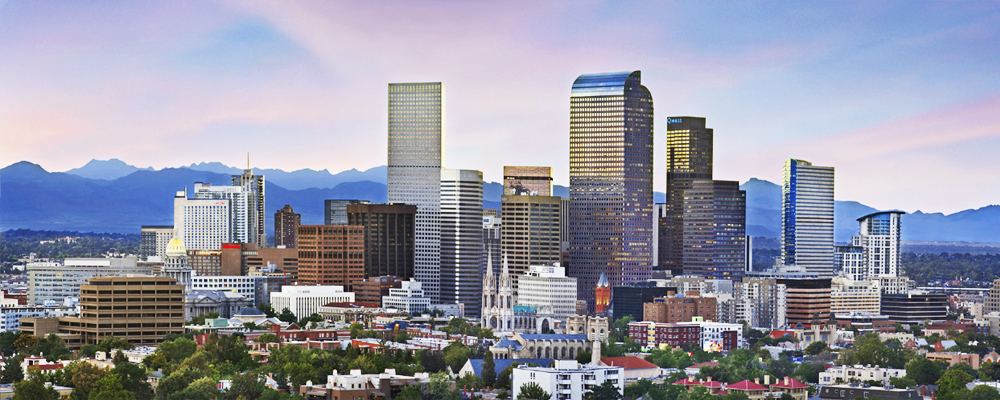
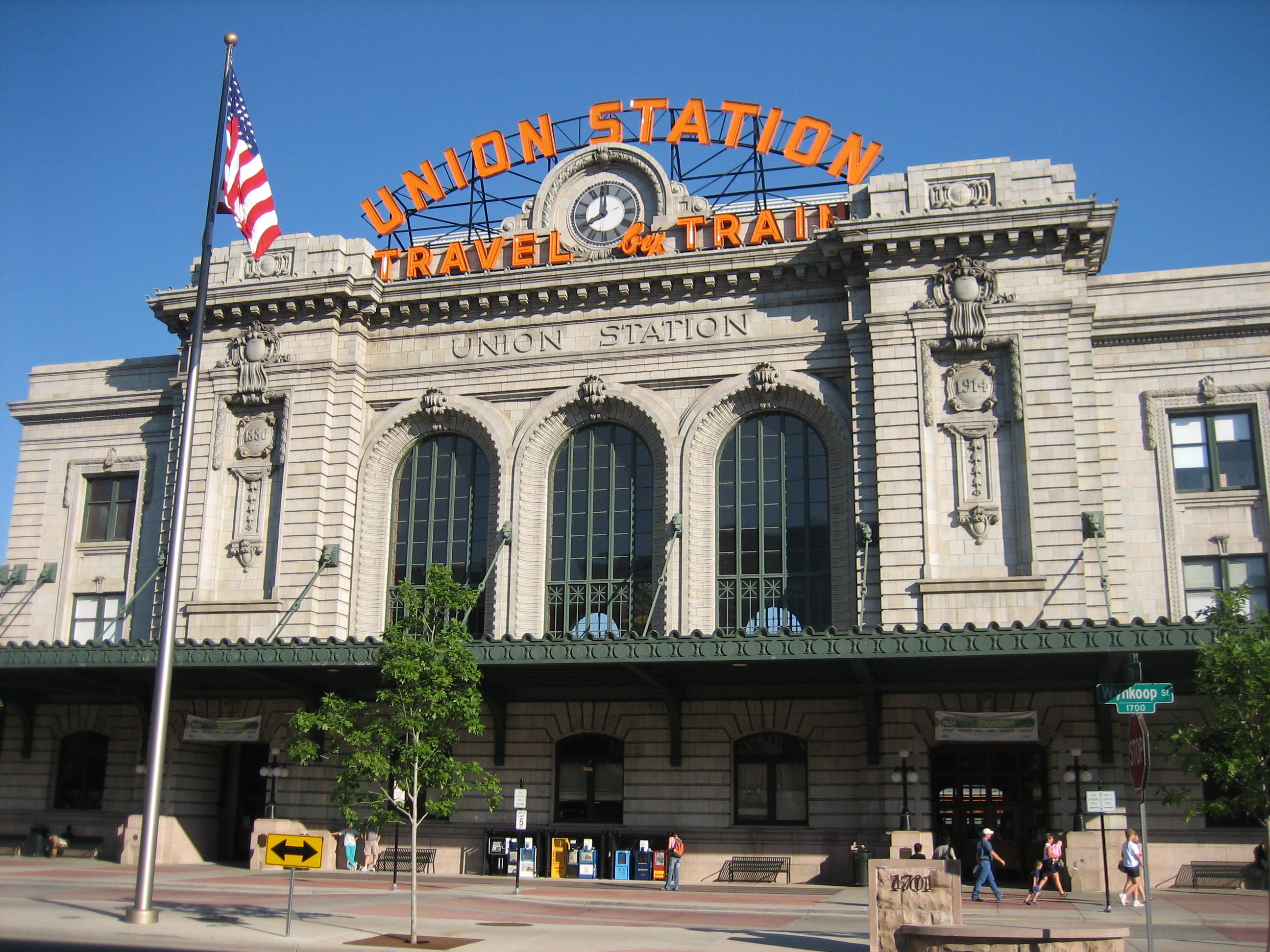

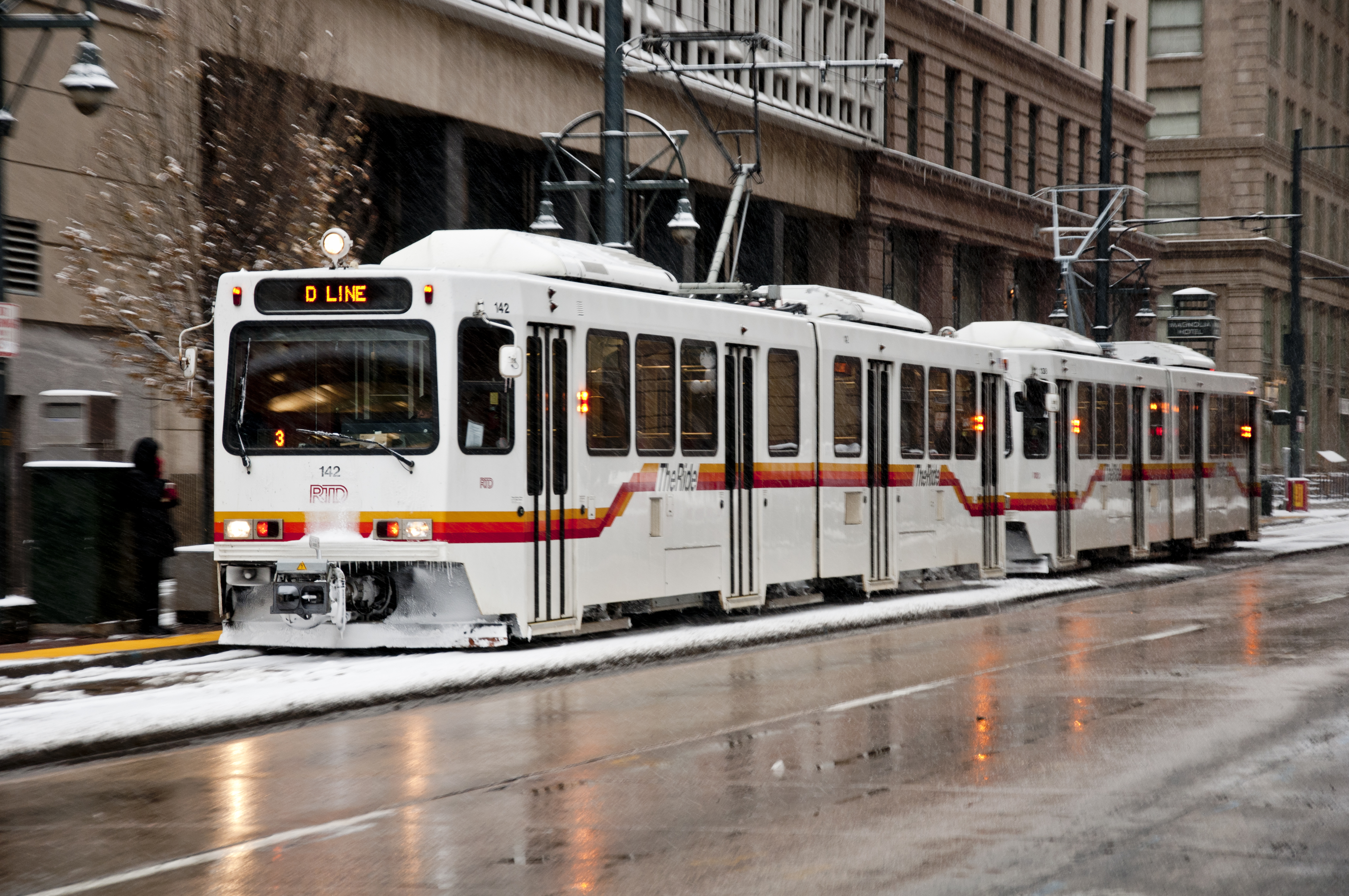

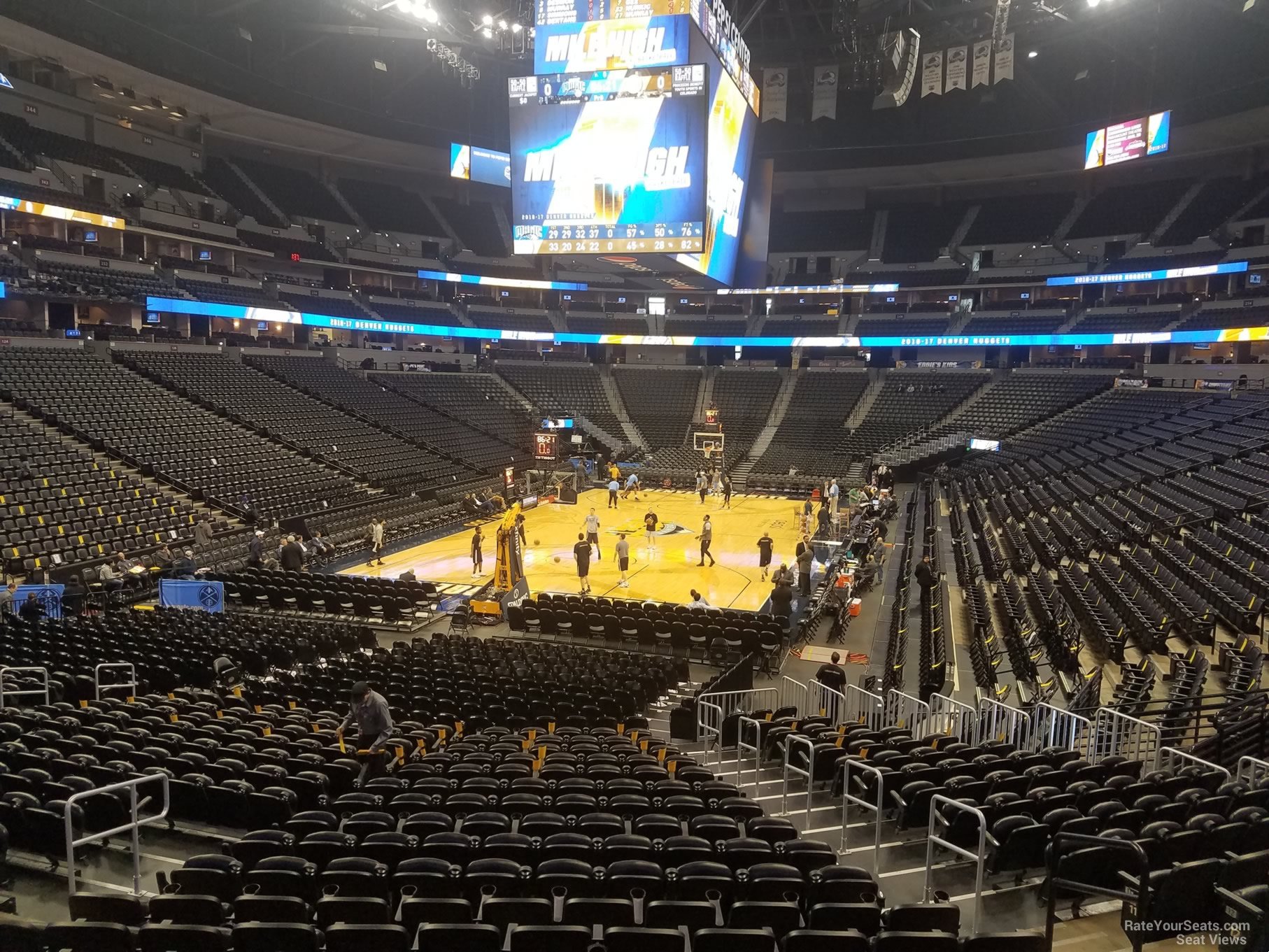

:format(webp)/cdn.vox-cdn.com/uploads/chorus_image/image/15083245/923095_564796223551028_1935572983_n.0.jpg)

